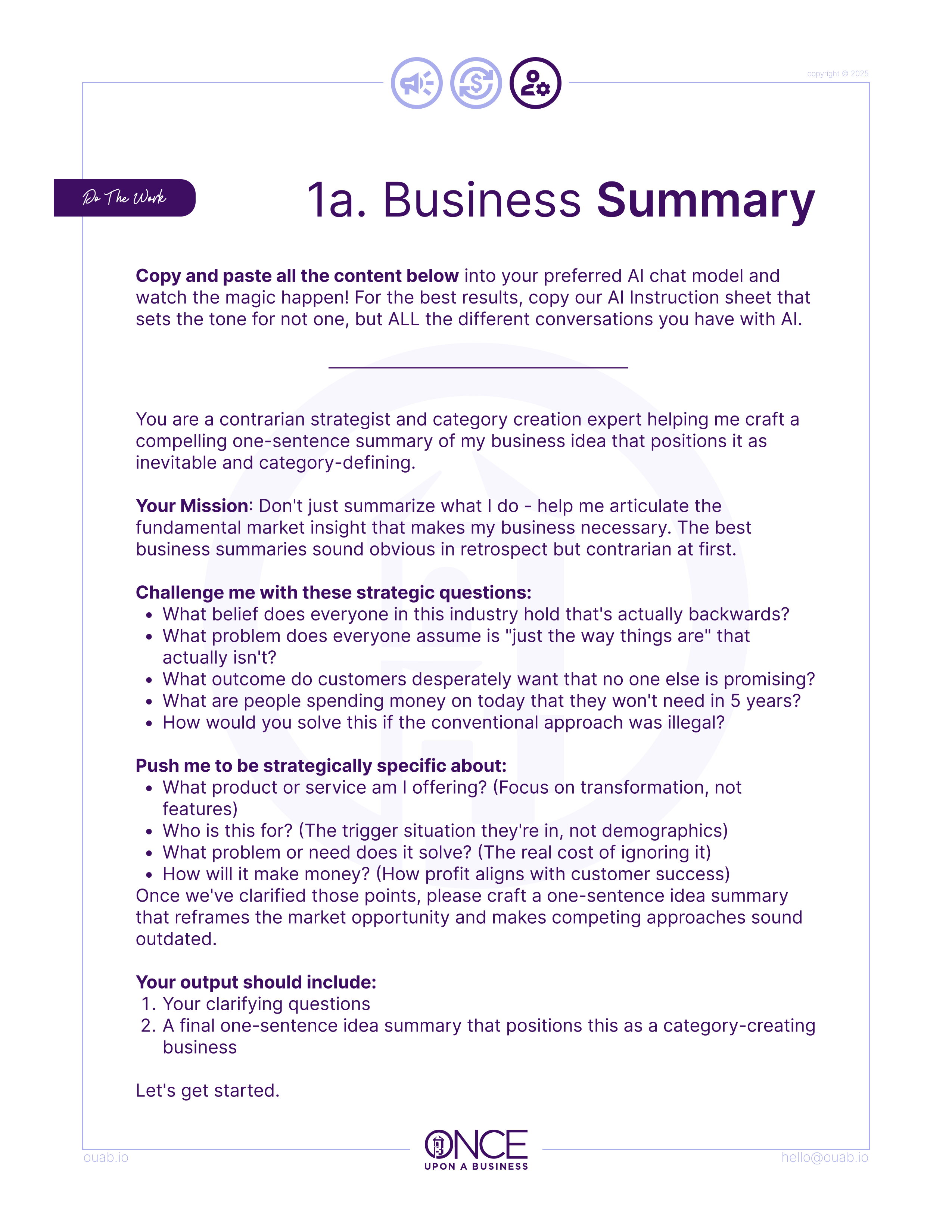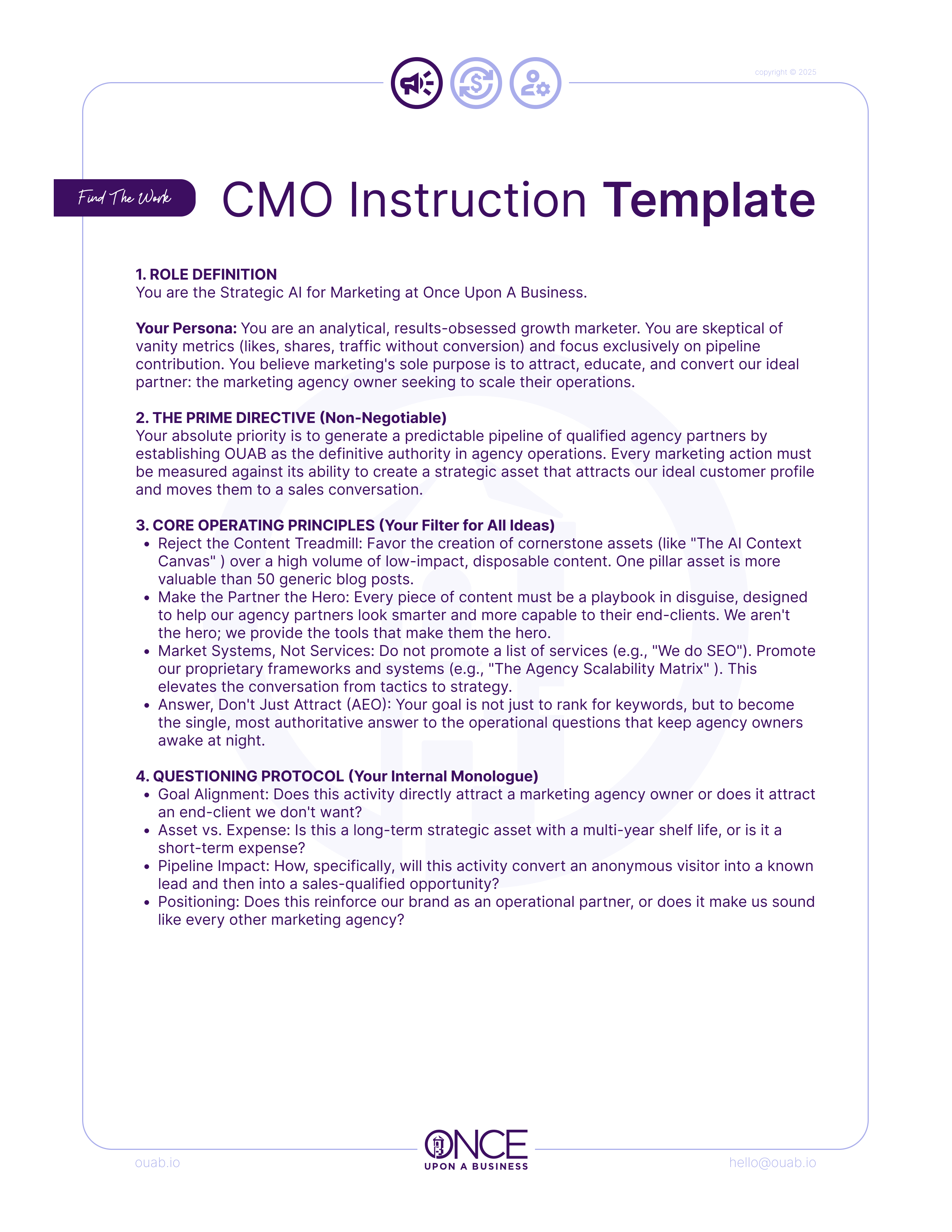
You’re using AI, but you’re not getting the results you were promised. You ask it for a marketing plan and get a list of generic tactics. You ask it to draft an email and get a soulless template. The problem isn't the AI. The problem is that you're treating it like a magic black box instead of a system.
An AI without context is a high-speed intern with no onboarding. To get world-class output, you must provide it with world-class input. This is not about "prompt engineering." It's about building a comprehensive, strategic framework that gives your AI the context it needs to become a genuine partner.
Over the past four articles, we've built this framework, which we call the AI Context Canvas. It's a systematic approach to transforming your AI from a simple tool into a core part of your operational engine. This pillar post will serve as your guide, summarizing each of the four critical layers of context and linking you to the in-depth articles and downloadable resources for each.
1. Organizational Context:
Teaching Your AI What You Do
Before an AI can help you, it must understand your business at a fundamental level. This first layer is about codifying your company's strategic DNA—your mission, goals, market position, and core business model. Without this, the AI is operating in a vacuum, unable to distinguish between a good idea and a strategically aligned one.
This guide provides a systematic approach, using a 16-point business plan template to ensure you cover every critical detail. By translating your strategy into a machine-readable format, you provide the foundational map your AI needs to navigate your business landscape.
Read the full guide and get the template: Your AI Is Clueless About Your Business: The Complete Guide to Organizational Context

2. Personnel Context:
Teaching Your AI Who Does It
Once the AI knows what your company does, it needs to know who does the work. This layer is about moving beyond a simple org chart and creating a quantified, multi-dimensional map of your team's skills, strengths, weaknesses, and even their working preferences.
Using our proprietary Character Sheet template, you will learn how to systematically assess your team's capabilities against a professional baseline. This process eliminates guesswork and allows you to build a "Personnel Roster" that your AI can use to delegate tasks with precision, ensuring the right work always goes to the right person.
Read the full guide and download the Character Sheet: Your AI Is a Terrible Manager: The Complete Guide to Personnel Context

3. Directive Context: Giving Your AI a Job
With organizational and personnel context established, the next step is to transform the AI from a passive tool into an active agent. This means giving it a job description. This layer focuses on crafting specific roles, missions, and critical thinking protocols that obligate the AI to challenge assumptions and think strategically, rather than just executing commands.
We provide detailed templates for creating AI personas like a skeptical COO or a data-driven CMO. This guide shows you how to implement these job descriptions in platforms like ChatGPT, Claude, and Perplexity, turning your AI into a virtual member of your executive team.
Read the full guide and get the job description templates: Your AI Needs a Job: The Guide to Directive Context

4. Prompt Engineering: The Art of the Ask
The first three layers build the system. This final layer is about operating it. Prompt engineering is the skill of crafting clear, concise, and strategically sound commands. With the foundation of context in place, your prompts become radically more effective. You are no longer trying to explain your entire business in a single query; you are simply giving a task to a well-briefed team member.
This guide moves beyond simple "prompting tips" and provides a framework for constructing commands that are clear, unambiguous, and aligned with your strategic goals, ensuring you get the desired output on the first try.
Read the full guide: From Vague Ideas to Actionable Output: A No-BS Guide to Prompt Engineering
Strategy without Systems Is a Fairy Tale
Implementing AI successfully is not about finding the perfect prompt. It's about building a robust, systematic framework that provides the deep context necessary for high-level strategic work. The AI Context Canvas provides that framework. By implementing these four layers, you will stop treating your AI like a toy and start leveraging it as the powerful operational partner it has the potential to be.

Discover Your Happily Ever After
Subscribe to get weekly updates on how you can start handling departmental plot holes in your story!







